CJC-F, CJC-F Announcements, CJC-F Tidbits, CLD Interest Pieces
Seven Things You Didn’t Know About Forensics!
If you’ve watched CSI or Brooklyn Nine-Nine, you might have some idea of what forensics can do. From finding “invisible” blood using luminol to identifying fingerprints at the scene of a crime, these are just some of the commonly dramatised forensic methods on TV shows and movies. However, here are some other facts that you might not have known about!
(1) Rifling can be used to identify the type of gun used
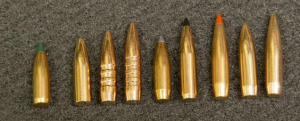
http://sportingclassicsdaily.com/wp-content/uploads/2017/03/Bullets-.224.jpg
Rifling can be seen as the “fingerprint” of a gun. It refers to the spiral lands and grooves in a gun’s barrel. These lands and grooves leave imprints on a bullet as it is shot out of the gun. Due to the various processes involved in creating these markings, each gun’s rifling technique is unique. This enables the identification of the precise gun involved through the process of ballistic fingerprinting. However, rifling characteristics alone can also narrow down the possible firearm brands and models.
(2) Glitter is an important piece of trace evidence
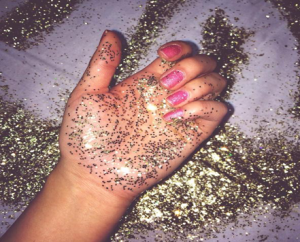

http://cdn-img.instyle.com/sites/default/files/styles/684xflex/public/images/2015/WRN/011415-glitter-594.jpg?itok=Mv4LQwYK
Yes, you read that right. GLITTER! Glitter is particularly useful as trace evidence. Glitter is a nearly perfect piece of trace evidence. It is nearly invisible, easily transferred and retained (on a suspect’s body), highly individualistic, and easily collected. Mere traces can be characterised and can survive many different environments. To its credit, glitter has been used to identify suspects, including murderers and kidnapper
(3) Pollen is another useful piece of trace evidence

http://static.boredpanda.com/blog/wp-content/uploads/2018/04/cute-harvest-mice-in-tulips-photography-miles-herbert-fb14_700-png.jpg
And not just pollen! Forensic palynology refers to the study of organic-walled microfossils (a.k.a. palynomorphs), the most common of which are pollen and spores (both fungal and plant) for use in investigations. Palynomorphs have been found on food, clothes, fingernails, skin, and even hair. Hence, they are useful in establishing links between objects and places, such as placing a suspect at the crime scene, or revealing where a body has been moved from. However, for such links to be sufficiently convincing, there must be either many similarities between the palynomorphs from the sample place and that found on the object, or some unusual or rare component that makes the palynomorph sufficiently distinctive.
(4) The Marsh test was invented to accurately identify arsenic
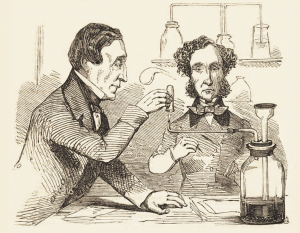
http://files.forensicpathologist.webnode.com/200000382-d95adda546/iii_b_617.jpg
(4) The Marsh test was invented to accurately identify arsenic

http://files.forensicpathologist.webnode.com/200000382-d95adda546/iii_b_617.jpg
In 1833, James Marsh investigated the murder of George Bodle by arsenic poisoning. The suspect was John Bodle, the victim’s grandson. However, at the time, the test for detecting arsenic wasn’t sufficiently long-lasting, and by the time the evidence was presented in court, it had deteriorated and was no longer definitive. Consequently, John Bodle was acquitted, even though he later admitted to the crime. This failure led James Marsh to create a new apparatus to test for arsenic that would leave more lasting results. Marsh’s test has since become extremely helpful in cases of arsenic poisoning. Perhaps most telling is the credit Marsh gets for the decline in such cases.
(5) Luminol isn’t all-powerful
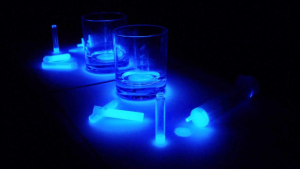
http://1.bp.blogspot.com/-zOSNmeD1TmU/U2oU5MS9aAI/AAAAAAAAAFg/0_peCIkIqOU/s1600/luminol-experimentation-by-styloooo-d4k003d.jpg
(5) Luminol isn’t all-powerful

http://1.bp.blogspot.com/-zOSNmeD1TmU/U2oU5MS9aAI/AAAAAAAAAFg/0_peCIkIqOU/s1600/luminol-experimentation-by-styloooo-d4k003d.jpg
Luminol is a tool used to reveal blood splatters where none can be seen. This is due to a luminescent chemical reaction with the components of blood, which causes the luminol to glow. If you’ve seen dramatised versions of luminol, you might think of this chemical as an extremely powerful tool that reveals all blood, leading to very convincing prosecutions. Unfortunately, this is not the case. Luminol only reveals where there might have been blood as other substances (e.g. household bleach) can also cause luminol to glow. Nonetheless, luminol still provides investigators with important clues, such as revealing a blood splatter pattern, from which investigators can narrow down the weapon used.
(6) Hair can give a timeline of drug consumption
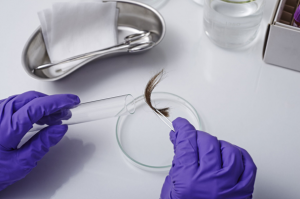

https://d.newsweek.com/en/full/519752/11-25-forensics-01.jpg
Unlike the organs of the body which process and remove toxins from the body, hair grows much slower and thus can give investigators insight into a longer time period of a person’s drug consumption. This ranges between a few months to a year. In addition to being an alternative method to urine drug testing, hair analysis can also reveal chemical exposure due to toxins in the environment. However, the power of hair analysis should not be overstated, as it is also susceptible to false-positive results and contamination.
(7) Earprints can be used to identify suspects
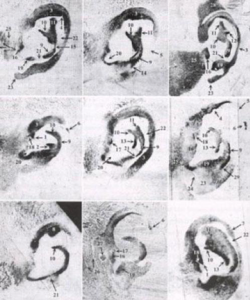
http://theworldsbestever.s3.amazonaws.com/blog/wp-content/uploads/2013/06/ear-print-catch-a-thief.jpg
(7) Earprints can be used to identify suspects

http://theworldsbestever.s3.amazonaws.com/blog/wp-content/uploads/2013/06/ear-print-catch-a-thief.jpg
When the ear is pressed to a surface (e.g. trying to listen through a door), it leaves oils and wax, creating an earprint. Unlike fingerprints, which can be planted, earprints are almost tamper-proof. It is also unlikely to be left by innocent passers-by. However, this area of forensic study is still fairly new. The earprint is also usually left in a publicly-accessible area before a crime is committed, and it is difficult to accurately pinpoint when an earprint is made. Thus, while earprints are helpful, their identification value should not be overstated.
While no piece of forensic evidence is fool-proof or usually conclusive, it works in conjunction with other evidence to develop an increasingly accurate case theory. As such, forensics has and will continue to play an extremely vital role in any criminal investigation.
*The views and opinions expressed in this article do not constitute legal advice and solely belong to the author and do not reflect the opinions and beliefs of the NUS Criminal Justice Club or its affiliates.
References
*The views and opinions expressed in this article do not constitute legal advice and solely belong to the author and do not reflect the opinions and beliefs of the NUS Criminal Justice Club or its affiliates.
References
- Barroso, M., & Gallardo, E. (2013, December 17). Hair analysis for forensic applications: is the future bright? Bioanalysis, 6(1), 1-3. Retrieved October 25, 2020, from https://www.future-science.com/doi/full/10.4155/bio.13.291
- Blackledge, B. (n.d.). GLITTER as Forensic Evidence. National Forensic Science Technology Center. Retrieved October 15, 2020, from https://projects.nfstc.org/trace/docs/final/Blackledge_Glitter.pdf
- Davis, A. L. (2005, March 21). How can a bullet be traced to a particular gun? Scientific American. Retrieved October 3, 2020, from https://www.scientificamerican.com/article/how-can-a-bullet-be-trace/
- Harris, T. (2002, June 11). How Luminol Works. HowStuffWorks. Retrieved October 25, 2020, from https://science.howstuffworks.com/luminol.htm
Author’s Biography

Nicole Teo is currently pursuing a degree in Law and in the middle of her second year of the programme. She is aspiring to be a prosecutor one day, which sparked her interest in all things related to criminal law, including forensic science.









